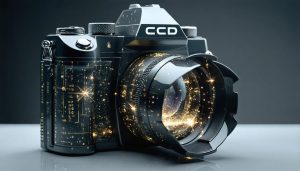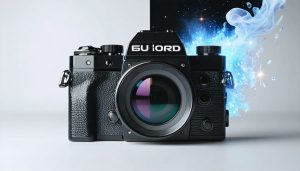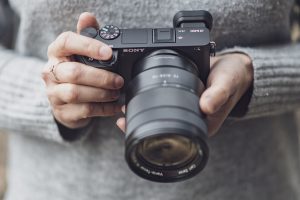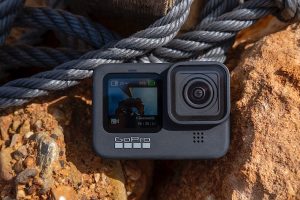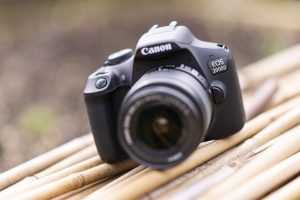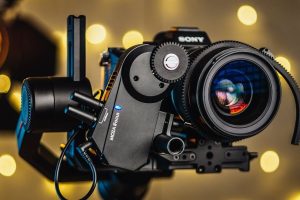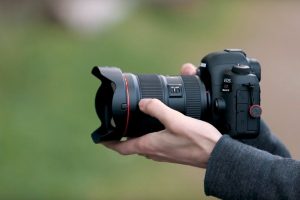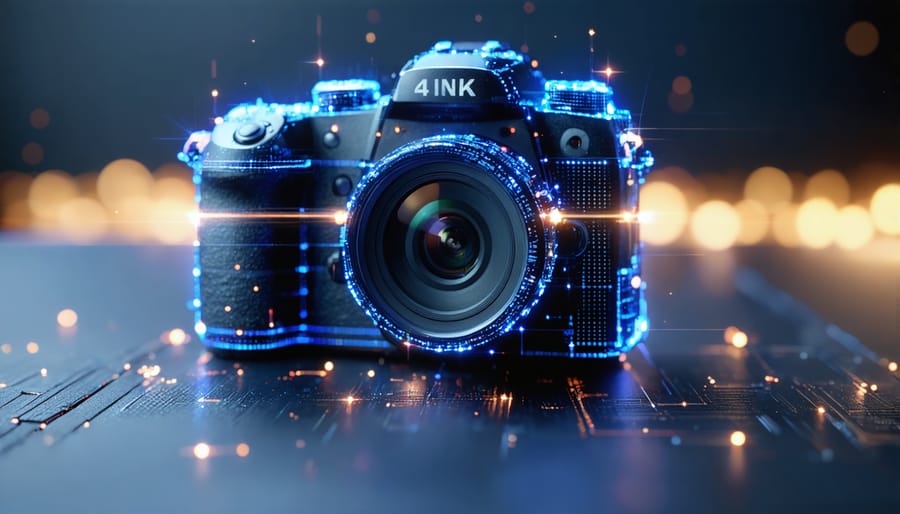
The revolution in camera sensor technology has reached new heights with 4K sensors, transforming how we capture and experience digital imagery. These advanced imaging components pack over 8 million pixels into a space smaller than a postage stamp, delivering unprecedented detail and clarity that rivals traditional 35mm film. Professional cinematographers and enthusiast photographers alike are witnessing a paradigm shift where resolution meets practicality, as 4K sensors now offer superior low-light performance, enhanced dynamic range, and the ability to crop aggressively without sacrificing image quality. While 4K technology once belonged exclusively to high-end cinema cameras, it has become increasingly accessible, appearing in everything from professional mirrorless cameras to smartphone devices. This democratization of high-resolution imaging hasn’t just improved picture quality – it’s fundamentally changed how we approach visual storytelling, enabling creators to capture moments with a level of detail and precision that was unimaginable just a decade ago.
What Makes a 4K Camera Sensor Special
Resolution and Pixel Count
When we talk about 4K camera sensors, we’re dealing with some impressive numbers. The standard 4K resolution packs approximately 8.3 megapixels into each frame, with dimensions of 3840 x 2160 pixels. This resolution matches the UHD (Ultra High Definition) standard commonly found in modern displays and provides four times the pixel count of Full HD (1920 x 1080).
However, it’s worth noting that cinema 4K slightly differs from UHD, offering 4096 x 2160 pixels – a wider aspect ratio that’s particularly relevant for professional filmmaking. Each pixel in a 4K sensor acts as an individual light-capturing element, working together to create highly detailed images with exceptional clarity.
The pixel density of 4K sensors varies depending on the physical size of the sensor. For example, a full-frame 4K sensor will have larger individual pixels than a crop-sensor camera with the same resolution, potentially leading to better low-light performance and dynamic range. Most modern 4K sensors employ a Bayer pattern arrangement, where each pixel captures either red, green, or blue light, with the final color image being interpolated from this data.
Understanding these specifications is crucial for photographers and videographers, as they directly impact image quality, storage requirements, and post-processing capabilities. The high pixel count enables significant cropping flexibility while maintaining resolution suitable for large-format printing or display.
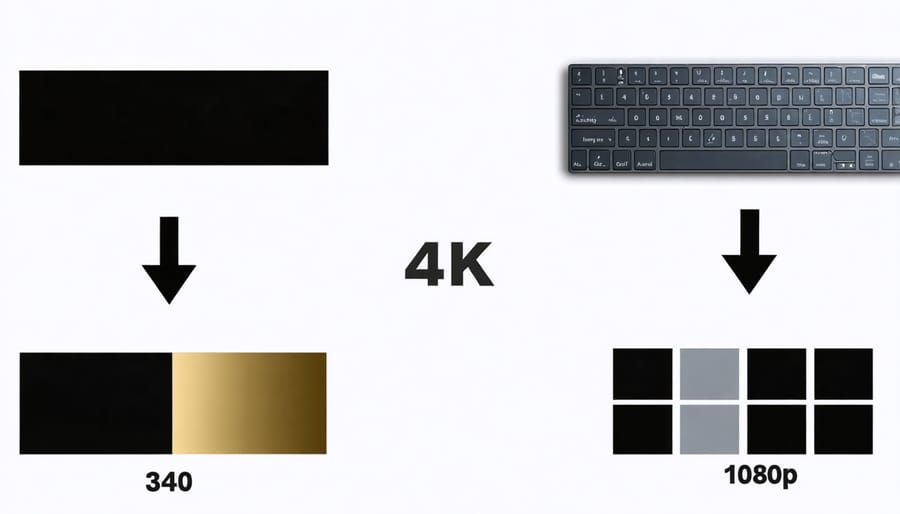
Sensor Size and Its Impact
When it comes to 4K image quality, sensor size plays a crucial role that goes beyond mere pixel count. Think of the sensor as a light-gathering surface – the larger it is, the more light it can capture, resulting in better image quality, especially in challenging lighting conditions.
Full-frame sensors, measuring approximately 36x24mm, typically deliver superior 4K performance compared to smaller sensors. They offer better low-light capabilities, produce less noise, and provide that coveted shallow depth of field that creates beautiful background blur. However, they also come with a higher price tag and larger camera bodies.
APS-C sensors (roughly 23.5×15.6mm) represent an excellent middle ground, offering impressive 4K quality while maintaining reasonable camera size and cost. Many popular mirrorless cameras use this format, delivering professional-grade results for most applications.
Micro Four Thirds sensors (17.3x13mm) still capture excellent 4K footage but might struggle more in low light compared to their larger counterparts. The trade-off is typically found in more compact camera bodies and more affordable lenses.
It’s worth noting that sensor size affects more than just image quality – it influences factors like field of view, lens selection, and even your shooting style. For instance, a full-frame sensor will give you a wider field of view compared to a smaller sensor using the same focal length lens, which can be particularly important for landscape or architectural photography in 4K.
Types of 4K Sensors
CMOS vs. CCD in 4K
When it comes to 4K imaging, both CMOS and CCD sensor technology have their unique strengths and characteristics. CMOS (Complementary Metal-Oxide-Semiconductor) sensors have become the dominant choice for 4K cameras, primarily due to their superior power efficiency and faster readout speeds. They excel at handling the massive data throughput required for 4K video recording while maintaining lower power consumption and heat generation.
While CCDs traditionally offered better image quality with less noise, modern CMOS sensors have largely caught up and even surpassed CCDs in many aspects. In 4K applications, CMOS sensors demonstrate excellent dynamic range and color reproduction, crucial for capturing the fine details and subtle gradations that make 4K content so compelling.
One significant advantage of CMOS sensors in 4K recording is their ability to perform on-chip parallel processing. This means they can handle multiple pixels simultaneously, resulting in faster frame rates and reduced rolling shutter effects – a common challenge in fast-moving 4K footage.
However, CCDs still maintain some advantages in specific applications. They excel in scientific and industrial imaging where absolute precision and uniformity are paramount. Their global shutter capability makes them ideal for capturing fast-moving objects without distortion, though this comes at the cost of slower overall operation and higher power consumption.
For most photographers and videographers working with 4K, CMOS sensors offer the best balance of performance, efficiency, and cost-effectiveness. They provide excellent low-light capability, faster continuous shooting speeds, and better heat management – all crucial factors when working with the demanding requirements of 4K resolution.
The choice between CMOS and CCD for 4K imaging ultimately depends on your specific needs, but CMOS has emerged as the clear winner for mainstream photography and videography applications, offering superior all-around performance for most users.
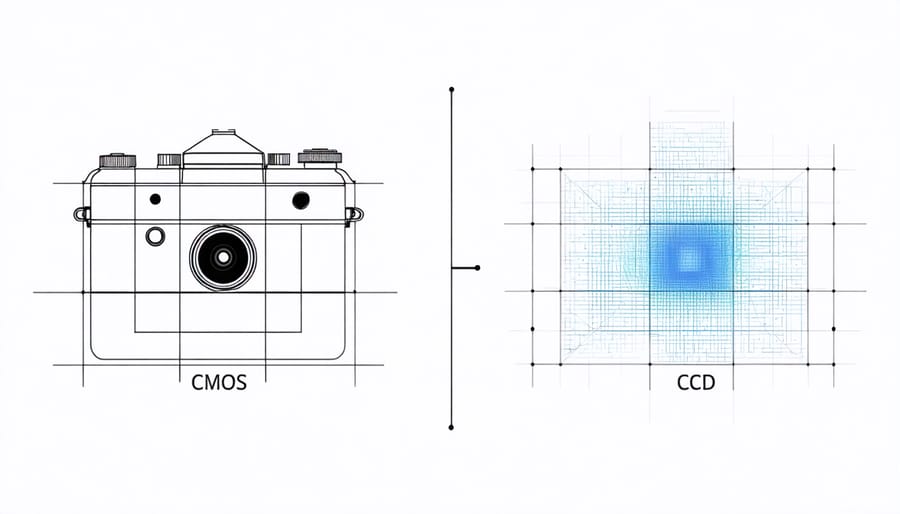
BSI vs. FSI Sensors
When it comes to 4K camera sensors, one of the most significant technological advancements has been the shift from Front-Side Illuminated (FSI) to Back-Side Illuminated (BSI) sensors. To understand the difference, imagine light trying to reach a sensor through a maze of wiring and circuitry – that’s essentially what happens in traditional FSI sensors.
In FSI sensors, light must pass through layers of metal wiring and circuitry before reaching the photodiodes (the light-sensitive elements). This design can result in some light being blocked or scattered, reducing the sensor’s overall light-gathering capability. Think of it like trying to see through a window with venetian blinds partially closed – some light inevitably gets blocked.
BSI sensors, on the other hand, flip this traditional architecture on its head. By placing the photodiodes on top and the wiring layer underneath, BSI sensors create a clear path for light to reach the photosensitive area. This clever redesign significantly improves light sensitivity and reduces noise, especially in low-light conditions. It’s like removing those venetian blinds and allowing all available light to stream through unobstructed.
The benefits of BSI technology are particularly noticeable in 4K sensors, where pixel density is high and light-gathering efficiency is crucial. BSI sensors typically offer:
– Up to 30% better light sensitivity
– Improved signal-to-noise ratio
– Better low-light performance
– Reduced cross-talk between pixels
– More consistent edge-to-edge image quality
While BSI sensors are more expensive to manufacture, their superior performance has made them the standard in most modern 4K cameras. The technology has proven especially valuable for smartphone cameras, where space is limited and every photon of light counts. For photographers and videographers, this translates to cleaner images, better dynamic range, and more flexibility when shooting in challenging lighting conditions.
Real-World Performance
Low Light Capabilities
Modern 4K camera sensors have made remarkable strides in their low-light photography capabilities, thanks to advances in pixel architecture and signal processing. Unlike earlier generations of sensors, today’s 4K sensors employ larger individual photosites and more efficient light-gathering designs, allowing them to capture cleaner images in challenging lighting conditions.
The secret lies in the sensor’s improved signal-to-noise ratio (SNR). By utilizing back-illuminated sensor technology, more light reaches the photodiodes, resulting in better light sensitivity without sacrificing resolution. This means you can shoot confidently even during blue hour or in dimly lit indoor environments without excessive noise in your footage.
Many current 4K sensors also feature dual native ISO, a game-changing technology that provides two base sensitivity levels. This allows photographers to switch between optimal ISO ranges depending on the lighting situation, maintaining image quality while pushing the boundaries of low-light shooting.
The practical impact is significant: wedding photographers can capture reception moments without harsh flash, documentary filmmakers can work with available light, and street photographers can embrace the atmosphere of twilight cityscapes. While higher ISOs will still introduce some noise, the clarity and detail retention of modern 4K sensors at ISO 3200 and beyond would have been unthinkable just a few years ago.
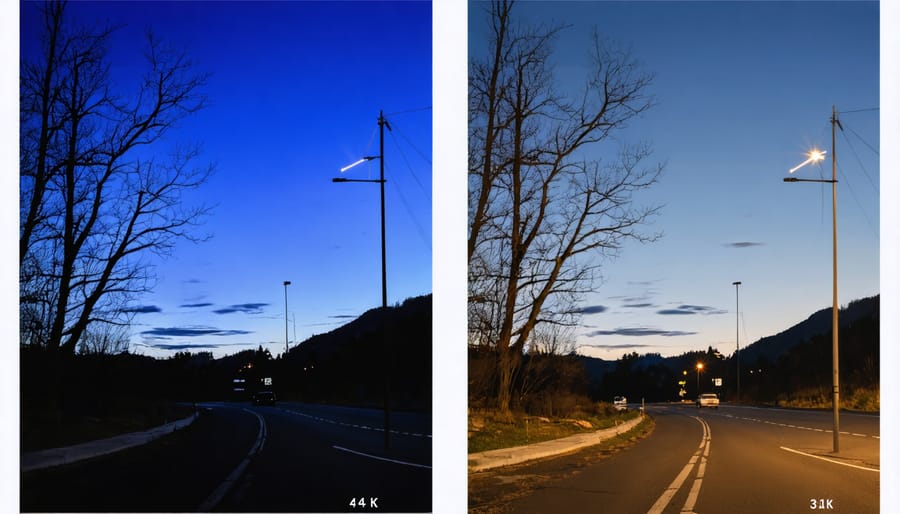
Dynamic Range
Dynamic range in 4K camera sensors represents their ability to capture both the brightest highlights and darkest shadows within a single frame. Modern 4K sensors typically offer between 12 to 14 stops of dynamic range, with some high-end models pushing beyond 15 stops, allowing photographers to capture scenes with extreme contrast differences.
Think of shooting a sunset landscape where you want to capture both the bright sky and detailed shadows in the foreground. A sensor with excellent dynamic range can retain information in both areas without losing details to pure white or black. This capability is particularly valuable in high-contrast situations like wedding photography, where you need to capture both white dresses and dark suits with proper detail.
The increased dynamic range in current 4K sensors comes from improved pixel architecture and more sophisticated processing algorithms. Many cameras now feature dual native ISO capabilities, which help maintain clean images and preserve dynamic range even in challenging lighting conditions.
Professional photographers benefit from this extended range through greater flexibility in post-processing. Raw files from these sensors contain more recoverable information in both highlights and shadows, reducing the need for techniques like HDR bracketing. For videographers, this translates to more cinematic footage with natural-looking contrast and smooth tonal transitions.
However, it’s worth noting that not all 4K sensors are created equal. Factors like sensor size, pixel density, and manufacturing technology can significantly impact dynamic range performance, making it essential to consider these specifications when choosing a camera for specific shooting scenarios.

Video Performance
4K camera sensors have revolutionized video performance, offering cinematographers and content creators unprecedented capabilities in capturing high-quality footage. These sensors excel at recording detailed 4K video (3840 x 2160 pixels) with exceptional clarity and color accuracy, making them ideal for professional video production.
One of the most impressive aspects is their ability to handle high-speed video recording while maintaining image quality. Many 4K sensors can capture footage at 60 frames per second (fps) in full resolution, with some advanced models reaching 120 fps or higher at reduced resolutions.
The larger surface area of 4K sensors also contributes to better low-light performance in video mode. This means cleaner footage with less noise, even when shooting in challenging lighting conditions. The increased pixel count allows for more flexibility in post-production, including the ability to crop footage while maintaining HD resolution or stabilize shaky video without significant quality loss.
Another significant advantage is the improved dynamic range in video mode. Modern 4K sensors can capture up to 14 stops of dynamic range, preserving both highlight and shadow details in high-contrast scenes. This capability, combined with various log profiles available in many cameras, gives videographers greater creative control during color grading.
Future of 4K Sensor Technology
The landscape of 4K sensor technology continues to evolve at a remarkable pace, building upon the incredible evolution of camera technology we’ve witnessed over the past decade. One of the most exciting developments is the emergence of stacked sensor designs, which promise to deliver unprecedented readout speeds and reduced rolling shutter effects. These innovations are particularly crucial for action photography and high-speed video capture.
Manufacturers are also making significant strides in pixel architecture, with new designs that maximize light capture while maintaining the resolution advantages of 4K sensors. The introduction of dual-gain architecture and improved noise reduction algorithms means we’re likely to see even better low-light performance in future sensors, potentially rivaling the capabilities of larger-format cameras.
Another promising trend is the development of hybrid pixel technology that combines phase-detection autofocus with traditional imaging capabilities. This integration is expected to result in faster, more accurate autofocus performance while maintaining the high image quality that 4K sensors are known for.
Looking ahead, we can expect to see more sophisticated AI-powered processing capabilities built directly into sensor designs. These smart sensors will be able to perform real-time analysis and optimization of image data, potentially revolutionizing how we capture and process images. Some manufacturers are already experimenting with sensors that can adjust their sensitivity patterns based on scene content.
The miniaturization of 4K sensor technology is also progressing rapidly, with new manufacturing processes enabling smaller form factors without compromising image quality. This development is particularly exciting for mobile devices and compact cameras, where space is at a premium but demand for high-quality imaging continues to grow.
Environmental considerations are driving innovation as well, with manufacturers exploring more energy-efficient sensor designs and sustainable manufacturing processes. These developments not only benefit the environment but also contribute to longer battery life in camera systems.
In conclusion, 4K camera sensors have revolutionized modern photography and videography, offering unprecedented detail and creative possibilities. As we’ve explored, these sensors combine high resolution, improved low-light performance, and enhanced dynamic range to deliver exceptional image quality. For photographers considering an upgrade, the decision to invest in a 4K sensor camera should be based on your specific needs and workflow requirements.
Professional photographers and serious enthusiasts will find the additional resolution invaluable for commercial work, large prints, and post-processing flexibility. However, hobbyists should weigh factors like storage requirements, processing power needs, and their primary output medium before making the switch.
Remember that a 4K sensor is just one component of a complete imaging system. Pair it with high-quality lenses, proper shooting techniques, and appropriate post-processing workflows to maximize its potential. As technology continues to advance and prices become more accessible, 4K sensors are increasingly becoming the standard for both still photography and video production, making now an excellent time to embrace this powerful imaging technology.



